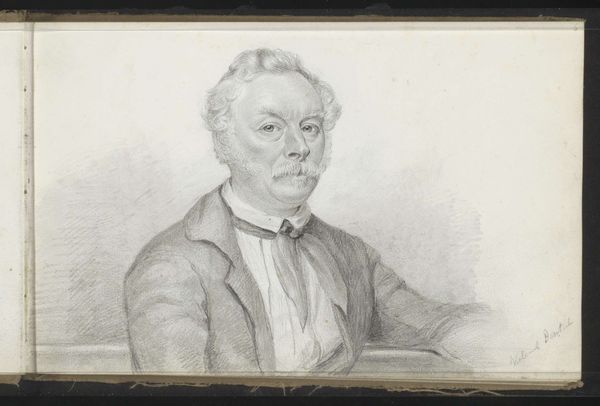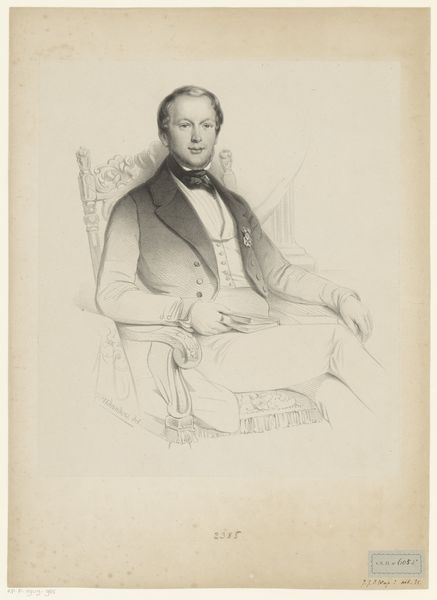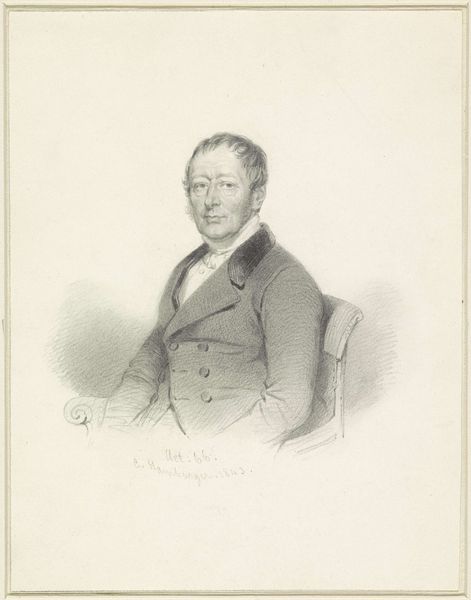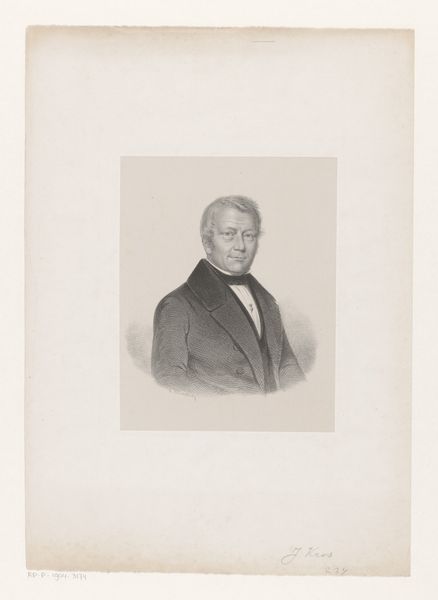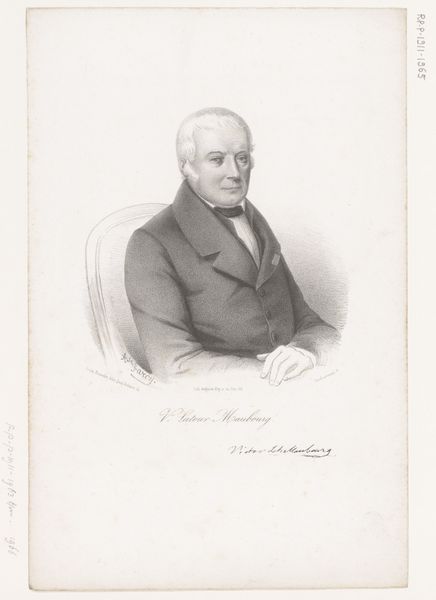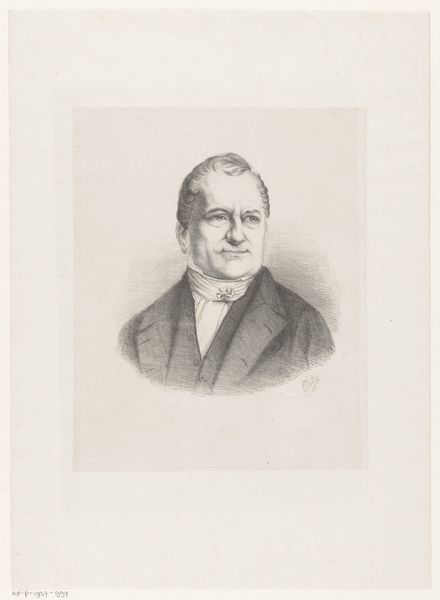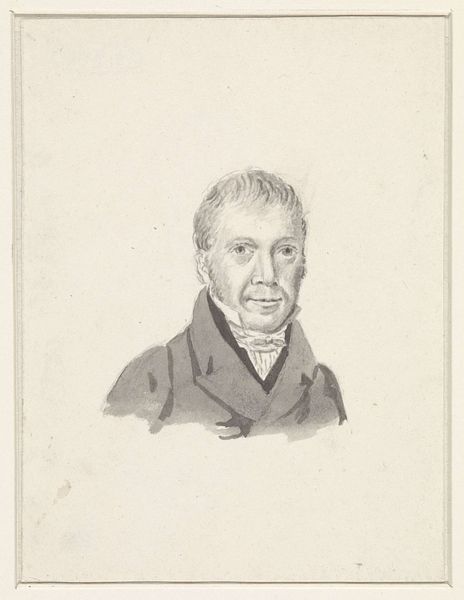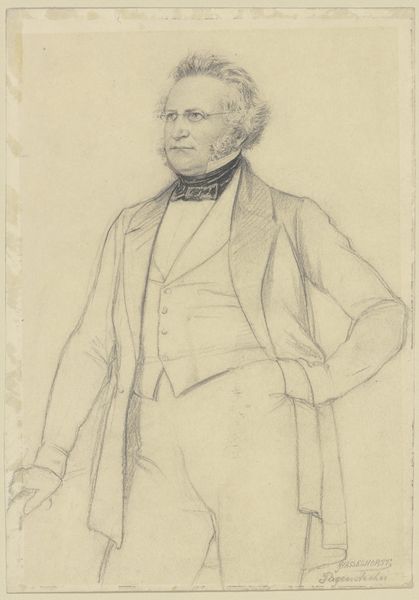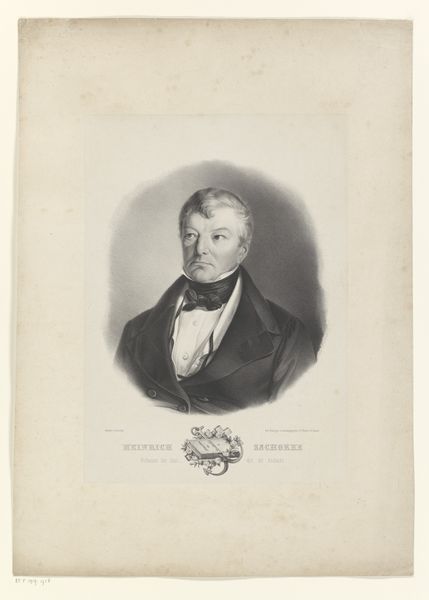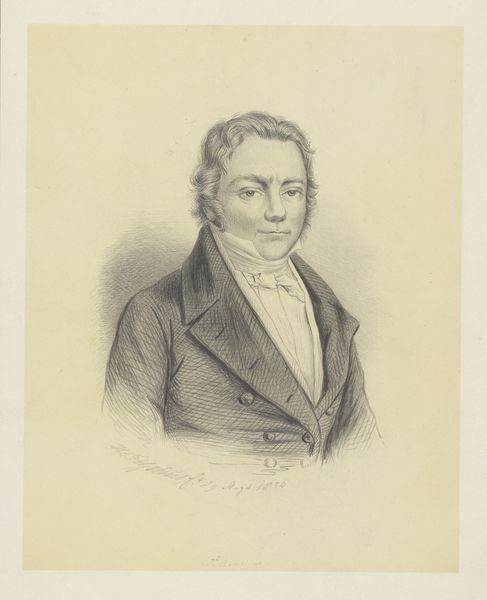
Copyright: Rijks Museum: Open Domain
Curator: Just look at him, all gentle smiles and a captain’s bearing softened by, what, age? The drawing, entitled “Portret van een kapitein,” or "Portrait of a Captain," crafted in graphite and pencil somewhere between 1848 and 1854 by Christian Heinrich Gottlieb Steuerwald. There's an immediate honesty, a human connection, rendered simply and beautifully. Editor: I am struck by that smile as well, and it appears deliberate, perhaps strategic even, meant to put someone at ease. Pencil, graphite, simple means, but oh so evocative of its historical context. This man lived through an era defined by naval power and colonial expansion, Romantic nationalism and class tensions…all perhaps captured with his commissioned image. Curator: I sense no cold strategy! He seems like he’d invite you in for tea and biscuits, tell you stories of faraway lands and wild storms... Did captains even *have* biscuits then? Perhaps hardtack, mostly... There's a sense of adventure behind those eyes. Editor: Adventures, undoubtedly, but who paid for those adventures? Who labored under what conditions to enable his journeys and comforts? Art is never neutral, especially portraiture from this period. Steuerwald was probably trying to sell an idealized image, one devoid of the grim realities lurking just beneath the surface. Curator: Maybe! Or, just maybe, he saw a decent, thoughtful human being. Not all portraiture is propaganda. There's a vulnerability to the work. It's almost sketch-like, not aiming for perfection, just capturing a fleeting moment. Editor: And who gets to be vulnerable? Who gets remembered? We need to ask those questions of every artwork, especially those of men in positions of power. What narratives are being amplified, and what are being erased? This portrait isn't *just* a likeness. Curator: Well, I'll still keep my tea and biscuit invitation open. I mean, there's always more to the story, right? Every image contains layers of intent, and how we receive those layers…it's unique to each viewer. And there's immense potential for projection, especially from those that we’ve built monuments to in our mind. Editor: Indeed. By looking critically at "Portret van een kapitein," by confronting its context and potential biases, we can truly see it – and ourselves – more clearly. Curator: So, here's to clear eyes, full biscuits...er, hardtack, and portraits that spark challenging conversations!
Comments
No comments
Be the first to comment and join the conversation on the ultimate creative platform.
